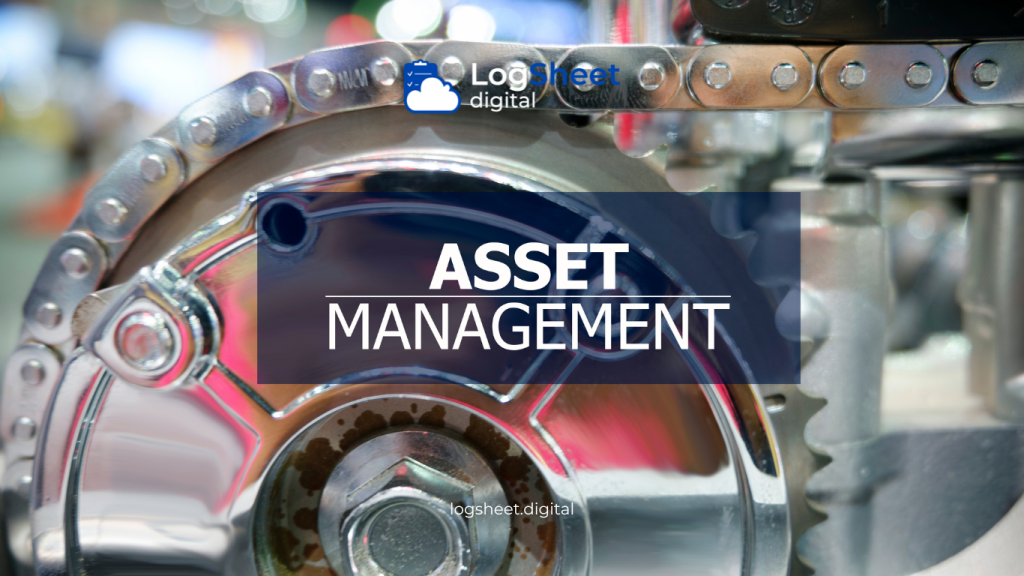Industry 4.0 is a phase of technological transformation that combines automation and digitalization in manufacturing and operational processes. In this era, all aspects of production and asset management are integrated with digital technology and the Internet of Things (IoT), creating intelligent and efficient systems. One crucial element in the journey towards smart assets is the digital logsheet. By implementing digital logsheets, companies can monitor, manage, and maintain their assets more effectively, which is a vital foundation for achieving Industry 4.0.
1. What is a Digital Logsheet?

Read More: Implementing Digital Logsheets in Safety Inspections
A digital logsheet is a system that replaces manual recording by using technology-based platforms to document, monitor, and store operational data and asset performance. This system allows for real-time monitoring of assets and processes across various industries. With digital logsheets, all information related to maintenance activities, inspections, and repairs is automatically and neatly recorded.
Unlike manual logsheets, which are prone to recording errors and data loss, digital logsheets provide higher visibility into asset conditions. This is crucial for managing smart assets in the Industry 4.0 era.
2. Benefits of Digital Logsheets in Asset Management

Read More: Enhancing Security and Quality in Delivery: Digital Logsheets in Logistics
2.1. Real-Time Monitoring
One of the main advantages of digital logsheets is their ability to monitor asset conditions in real time. In industries that use numerous tools and machines, timely and accurate monitoring is crucial to prevent damage and downtime. With digital logsheets, operators can quickly detect potential issues, allowing preventive actions to be taken before more significant damage occurs.
2.2. Increased Data Accuracy
Manual recording often leads to human errors that can disrupt operational processes. Digital logsheets ensure data accuracy by minimizing manual intervention. The data generated automatically is also more consistent and can be processed more quickly for strategic decision-making.
2.3. Easier Maintenance History Tracking
In smart asset management, knowing the maintenance history is vital. Digital logsheets facilitate tracking maintenance, repair, and inspection histories of assets. With comprehensive records, companies can plan more effective preventive maintenance, reducing the risk of unexpected failures.
2.4. Optimization of Time and Costs
Digital logsheets help reduce the time needed for manual recording and minimize costs associated with emergency repairs. Moreover, real-time monitoring and structured data analysis enable companies to plan asset maintenance more efficiently. Consequently, this approach reduces downtime and lowers operational costs. In addition, by streamlining maintenance processes, companies can allocate resources more effectively, further enhancing overall productivity.
3. Connecting Digital Logsheets with IoT for Smart Assets

Read More: Enhancing Delivery Monitoring: Advantages of Digital Logsheets in the Logistics Industry
Integrating digital logsheets with IoT technology is a crucial step in creating smart assets. IoT allows equipment and machines to connect with one another and automatically send data to the digital logsheet system. Some benefits that arise from this collaboration include:
3.1. Comprehensive Data Collection
With IoT sensors, assets in the field can automatically send information related to performance, temperature, vibration, and other critical variables. All this data is then recorded in the digital logsheet and analyzed automatically, enabling management to identify trends and patterns in asset performance.
3.2. Prevention of Disruptions and Failures
Digital logsheets connected with IoT enable the prediction of equipment failures before they occur. Data collected through IoT sensors can be analyzed using algorithms to detect early signs of damage. With this prediction, companies can plan maintenance before equipment actually breaks down, ultimately reducing downtime and repair costs.
3.3. Energy Usage Efficiency
Energy consumption is a crucial aspect of smart asset management. With digital logsheets connected to IoT, companies can track energy use in real time and identify areas where energy consumption can be optimized. This not only reduces operational costs but also supports the company’s sustainability initiatives.
4. The Role of Digital Logsheets in Predictive and Preventive Maintenance

Read More: Data Security in Digital Logsheets: Challenges and Solutions
Predictive and preventive maintenance are two maintenance methods that heavily rely on data. In this context, digital logsheets become a vital tool in implementing both of these methods. Furthermore, they enable continuous data collection and analysis, which enhances decision-making processes. As a result, companies can optimize maintenance schedules and reduce unexpected failures. Ultimately, the integration of digital logsheets supports a more efficient and effective maintenance strategy.
4.1. Predictive Maintenance
With digital logsheets, machine performance data is continuously collected and analyzed to predict when equipment will require maintenance. For instance, sensors connected to the digital logsheet can detect abnormal increases in temperature or vibration on specific machines. Based on this data, the system can alert the maintenance team to take action before damage occurs.
4.2. Preventive Maintenance
In preventive maintenance, digital logsheets help schedule and record routine maintenance activities aimed at preventing damage before it occurs. All maintenance activities conducted are neatly recorded, making it easier for technical teams to ensure that equipment is always in optimal condition.
5. Challenges in Implementing Digital Logsheets

Read More: Successful Steps in Implementing Digital Logsheets in Asset Management
Despite the numerous benefits, the implementation of digital logsheets also faces several challenges that companies need to address, including:
5.1. Resistance to Change
Many companies still rely on traditional manual recording methods. Adopting digital logsheets requires a change in culture and processes, which often meets resistance from employees. A solution to this issue is providing comprehensive training and ensuring that all parties understand the long-term benefits of digital logsheets.
5.2. High Initial Investment
The initial investment for implementing digital logsheet systems, including IoT infrastructure and software, can be quite significant. However, this investment will pay off in the long run through reduced operational costs and increased efficiency.
5.3. Data Security
With increasing digitalization, data security becomes a primary concern. Companies need to ensure that the data recorded in digital logsheets is well protected from potential cyber threats. Security measures such as data encryption, user authentication, and firewalls should be implemented to protect sensitive information.
6. The Future of Smart Assets with Digital Logsheets

Read More: Applying Digital Logsheets for Inventory Management and Asset Condition
In the future, digital logsheets will be the backbone of smart asset management. With advancements in technologies such as artificial intelligence (AI) and machine learning, digital logsheets can provide deeper insights into the health and performance of assets. This will enable companies to make faster and more accurate decisions in managing their assets.
Industry 4.0 will also accelerate the adoption of technologies such as cloud computing and blockchain in digital logsheets. These technologies will support better collaboration among departments and ensure data transparency and security throughout the supply chain.
Conclusion

Read More: Applying Digital Logsheets for Asset Inventory and Condition
Digital logsheets are a key component in the transformation towards smart assets in the Industry 4.0 era. With the ability to monitor, record, and analyze data in real time, digital logsheets help companies improve operational efficiency, reduce maintenance costs, and extend asset lifespan. Although challenges such as resistance to change and data security need to be addressed, the long-term benefits of digital logsheets are significant. As technology continues to evolve, digital logsheets will play an increasingly important role in creating a smarter, more efficient, and sustainable industry.






comments (0)